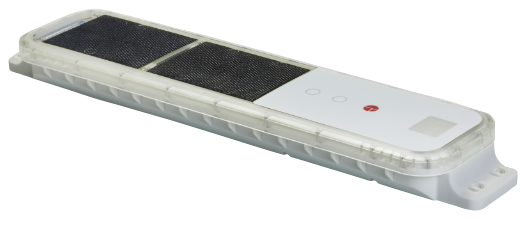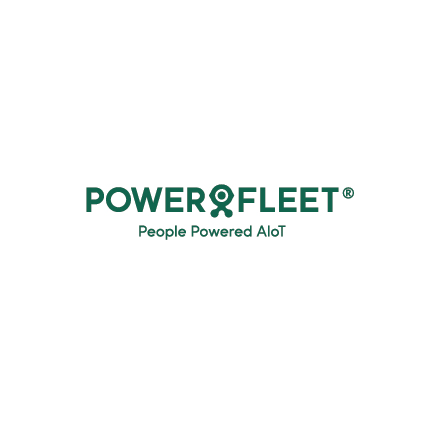Real-time visibility of assets is critical to minimizing the risks of food spoilage, cargo loss and theft, as well as providing actionable business intelligence. Powerfleet’s new dual-mode communication solutions support both 4G LTE and satellite technology, providing true global communication in rural or highly congested areas, across borders, and during extreme weather.
Let’s take a look at how dual-mode communication provides peace of mind, particularly in rural areas, cellular dead zones and other trouble spots, and how to add capabilities to your fleet.
Dual-mode communication ensures continuous visibility for fleets through the use of cellular and satellite networks. Share on XVisibility Gaps
Conventional two-way communication devices rely on cellular networks. Over the past decade, cellular communication has become increasingly widespread and reliable. In fact, many trucking companies are upgrading their tracking devices to 4G LTE in preparation for the 3G sunset and to improve connection speeds and increase coverage.
Watch our video explainer on dual-mode communication.
These improvements have helped coverage, but there are still many instances where cellular networks often fall short, including:
- Coverage Gaps – Rural and mountainous areas are notorious for creating coverage gaps that are impossible or economically infeasible to close.
- Extreme Weather – Hurricanes, ice storms, tornadoes, and other extreme weather can take down cellular networks for days or even weeks.
- Network Congestion – Heavily populated areas can create spikes and bandwidth issues in cellular networks, resulting in extreme latency or outages.
Visibility gaps are particularly acute in larger fleets with hundreds of thousands of trailers. Keeping track of so many assets is already a constant challenge, but those outside of cellular range are impossible to track. Dual-mode communication is the only way to ensure complete visibility without disruption in these situations.
The lack of cellular coverage is problematic for several reasons, including:
- Refrigerated trailers require constant intelligence around status and temperature to reduce losses and remain compliant with the FDA’s Food Safety Modernization Act. Two-way telematics can help fleet managers keep an eye on it at all times and ensure quality and compliance.
- Communication gaps can lead to costly mistakes and non-compliance, but hazardous or sensitive cargo creates an even bigger risk. High-value cargo has an elevated theft risk whereas accidents involving hazardous cargo must be immediately reported to prevent costly damages or even loss of life—all significant risks for fleet owners.
- Following COVID-19, the relationship between shippers and carriers has become more critical. Customers expect more transparency and reliable service. A dual-mode device enables accurate reporting and timely notifications such as estimated arrival times, delays, loading and unloading status, and dwell time.
- Without cellular coverage, ELD devices are unable to electronically record or display driver records of duty status. Data synchronization issues, incorrect timing, and delayed positioning information can result from tasks being held in waiting or backed up due to the loss of cellular service.
Dual Mode Communication
Dual-mode communication addresses these issues by augmenting traditional cellular connectivity with satellite capabilities, providing uninterrupted, real-time two-way communication in even the most remote regions. It’s the only way that fleets can ensure consistent communication at all times—no matter where they’re located.
Powerfleet’s LV-550 is a self-contained device that provides visibility for trailers or other equipment that operate in remote areas. In addition to dual-mode communication, the LV-550 operates in the harshest climates, roughest conditions, and with limited power to keep assets and cargo connected from the start to the end of a route, wherever that may be.

Powerfleet’s LV-550 provides continuous visibility – Source: Powerfleet
More recently, Powerfleet added dual-mode communication to its reefer solution in the LV-450, adding to the cutting-edge benefits of its predecessor the LV-400. The LV-450 provides continuous refrigerated trailer tracking and temperature management with dual-mode communication and seamless two-way integration with all major reefer brands.
In addition to dual-mode communication, the LV-450 works with all major refrigeration unit brands regardless of whether they’re tethered or untethered. The device alerts managers with out-of-range notifications, fuel level status, landmark arrival and departure, and accurate proof-of-temperature and humidity for FSMA compliance.
Unparalleled Visibility & Analytics
Dual-mode communication ensures that data from telematics devices is uninterrupted in order to provide the most accurate insights. For example, if a reefer unit experiences a critical fault en route, fleet operators can be immediately alerted regardless of cellular coverage and work with the driver to address the issue before it causes valuable cargo to spoil.
While telematics solutions are helpful for solving problems that occur in real-time, they’re even more useful for generating long-term, data-driven insights. Fleet owners can measure dwell times, asset turns, and other key performance indicators over time to improve asset utilization, find operational inefficiencies, and dramatically improve freight visibility.

Powerfleet provides actionable business intelligence at your fingertips – Source: Powerfleet
Powerfleet’s easy-to-use software converts the raw data from telematics devices into actionable insights that can improve your fleet’s bottom line. From remote yard checks to FMCSA compliant logbooks to instant KPIs, we make it easy to streamline operations and processes to better connect your fleet, employees and customers.
The Bottom Line
Ubiquitous visibility is a critical part of operating a successful fleet, but unfortunately, cellular networks lack full national coverage. If your fleet operates in rural or other remote areas, communication gaps can be a frustrating part of everyday life that leads to lost assets, inefficiencies, friction with drivers and customers, and may even put assets and cargo at risk.
Fortunately, telematics solutions combine both cellular and satellite networks to create robust real-time visibility. By keeping drivers and dispatch in sync, fleets can avoid many of these costly problems and ensure that everything runs smoothly while preserving data integrity for accurate data-driven insights.
Contact us today or find a local sales rep to learn more.


